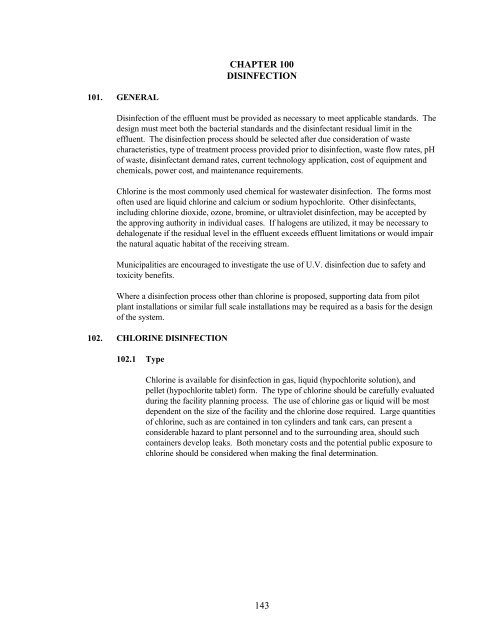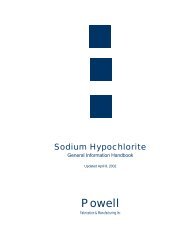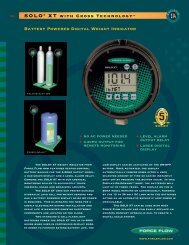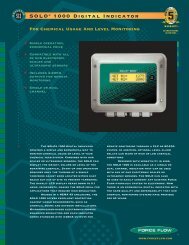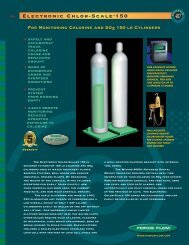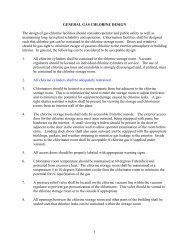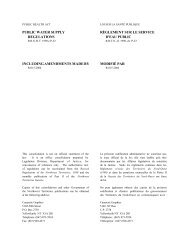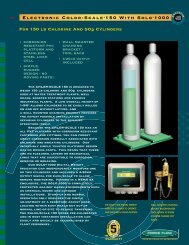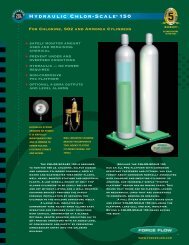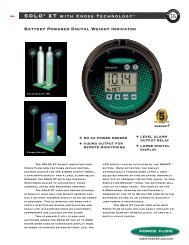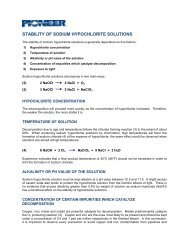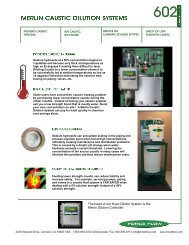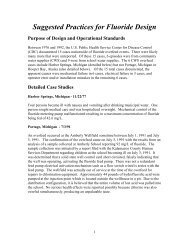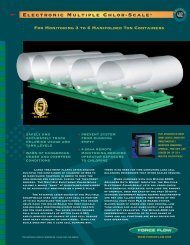Montana DEQ - Circular DEQ 2 - Design Standards for ... - Force Flow
Montana DEQ - Circular DEQ 2 - Design Standards for ... - Force Flow
Montana DEQ - Circular DEQ 2 - Design Standards for ... - Force Flow
Create successful ePaper yourself
Turn your PDF publications into a flip-book with our unique Google optimized e-Paper software.
CHAPTER 100DISINFECTION101. GENERALDisinfection of the effluent must be provided as necessary to meet applicable standards. Thedesign must meet both the bacterial standards and the disinfectant residual limit in theeffluent. The disinfection process should be selected after due consideration of wastecharacteristics, type of treatment process provided prior to disinfection, waste flow rates, pHof waste, disinfectant demand rates, current technology application, cost of equipment andchemicals, power cost, and maintenance requirements.Chlorine is the most commonly used chemical <strong>for</strong> wastewater disinfection. The <strong>for</strong>ms mostoften used are liquid chlorine and calcium or sodium hypochlorite. Other disinfectants,including chlorine dioxide, ozone, bromine, or ultraviolet disinfection, may be accepted bythe approving authority in individual cases. If halogens are utilized, it may be necessary todehalogenate if the residual level in the effluent exceeds effluent limitations or would impairthe natural aquatic habitat of the receiving stream.Municipalities are encouraged to investigate the use of U.V. disinfection due to safety andtoxicity benefits.Where a disinfection process other than chlorine is proposed, supporting data from pilotplant installations or similar full scale installations may be required as a basis <strong>for</strong> the designof the system.102. CHLORINE DISINFECTION102.1 TypeChlorine is available <strong>for</strong> disinfection in gas, liquid (hypochlorite solution), andpellet (hypochlorite tablet) <strong>for</strong>m. The type of chlorine should be carefully evaluatedduring the facility planning process. The use of chlorine gas or liquid will be mostdependent on the size of the facility and the chlorine dose required. Large quantitiesof chlorine, such as are contained in ton cylinders and tank cars, can present aconsiderable hazard to plant personnel and to the surrounding area, should suchcontainers develop leaks. Both monetary costs and the potential public exposure tochlorine should be considered when making the final determination.143


